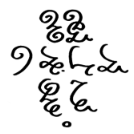All Activity
- Past hour
- Today
-
I do agree with you on the issue of balancing, and I can also see how the melodic choices I made didn't contribute much toward melodic development. As I said in my response to the initial feedback you gave, I went through with a new friend of mine who was willing to take his free time to instruct me on some of the Music Theory material that I was unfamiliarized with, that related to some of the things he noticed wrong with it, which were much in line with what your critique of it has been so far. So moving forward, I'll be looking to improve upon what you've mentioned, among other things as well. do always appreciate your feedback, and will be using this information to further progress my skill in dabbling with composition. And I do hope that you were able to enjoy this piece, despite the issues with it. I feel that with this one, I at least had some awesome chord modulations 😅 Especially there at the end, modulating back to the original key of F minor, just before the transition from strings harmonies to brass harmonies.
-
Hi Petr..... Let me one of the 1st to Congratulate you on a Fine-Performance Your compostion has a Professionalism equal to what one hears, on Mainstream-commercial Classical music Radio stations.
-
Petr Kopuletý started following My first big composition
-
Hi everyone, I would like to share with you my first major composition: a string quartet. My compositional style is evident in it, which is quite unusual, but at the same time I think it is accessible to a wider audience. I'd appreciate it if you gave it a listen! Thank you! https://youtu.be/WPfU9OKB8Aw?si=EFZEiZDdlTbWXOnu
-
Petr Kopuletý joined the community
-
Jqh73o started following Piano Sonata no. 5 complete!!
-
ComposaBoi started following Piano Sonata no. 5 complete!!
-
I finished the other two movements hooray!! Here's the YouTube upload. Please let me know what you think so I might apply the advice for future piano works 🙂 As for the piece itself, it's so personal to me I'm not willing to change anything, though I recognise it's not flawless. I think it is my very best piano piece and I'm extremely proud of it despite its issues. I'll do a rundown of the piece real quick so ya'll know what to expect. Movement 1. Sonata form, both themes are derived from the same rhythmic idea. A theme for desolation and a theme for consolation, which alternate in rotations becoming less and less certain until neither resolve. closes on a 6 4 chord. attaca into... Movement 2. Ternary form. A is a waltz with violent interruptions. B is more restless and dramatic. The return to A is based on first movement closing 6 4. Ending of A is infected with B motifs. Closes with a satisfying cadence at last. Movement 3. Ternary form. This movement is meant to be "looking back" at the events of the previous movements. B section is turbulent again. A section returns. The movement closes with a chorale "prayer." attaca into... Movement 4. Sonata form. Opens with a return to the consolation motifs from movement 1. First theme is dramatic and modulates constantly. Second theme is a combination of consolation and prayer. The climax of the development (and I think the climax of the whole piece really) with the minor version of the consolation theme from the first movement is in E minor which is a tritone away from tonic key. Recap has no proper second theme, only fragments. It ends resolved on a single note all by itself. All alone. Thank you for listening and for any feedback :3
-
Yeah that chord i was wanting to change in bar 14. As for experimenting with rhythm I sorta kept it simple just cuz I don't really have lots of experince playing this type of music. Right now I'm learning Schoenburgs op11 so hopefully some of his ideas rub off on me. I usually write what I can play but even still I think I could've added triplets or sixteenth notes at the least to vary it. I'll see about adding more experimentation in terms of rhythm.
-
Hey @Rafael Avila! Thanks for posting this here! I enjoyed some of the harmonies created by this set! The set itself is interesting being created by two 5ths a half step apart (A, Bb, E, F). I think the piece sounds kind of strange sometimes at points where there's strong consonances where I would expect a dissonance (like at bar 14, beat 2). Also, this is a good experiment in using a set (presumably the first time you've tried writing a piece using a set?). But it does come off kind of like an exercise because of the constant, mechanical and metronomic pulse and almost exclusive use of only 8th notes and quarter notes. You have a ritardando towards the last chord which does function well to make the piece feel like it concludes well (and the last chord is also pretty cool - a Bb maj7 #11)! But the rest of the piece kind of ambles along at a constant unchanging tempo which feels very pedestrian. There are so many more individual musical gestures to be made using triplets and more complex rhythms and quicker or accelerating and decelerating note values. I just feel like there is so much more experimentation to be made here - but it's definitely a good first try at a piece using a set! Thanks for sharing!
-

How do non-musicians listen to music?
FILMSCORE replied to Striped Cow's topic in Composers' Headquarters
How do non-musicians listen to music? Their all waiting for a FEELING.........if you cant provide that FEELING..........You've lost them,Theyv'e Clicked-Off . "You never get a second chance to make a first impression" -
PeterthePapercomPoser started following Ceral no 1
-
Rafael Avila started following Ceral no 1
-
Hi this is a piano piece I'm working on, it's almost done and needs some touching up. It uses a set. Would love feedback and thoughts on it.
-
PeterthePapercomPoser started following 🌎 World-International Music
-
Really good work! I love the trills in the winds against the prominent lower strings that starts around the 2:00 mark. The one thing I would advise is with the snare part starting at measure 48 could be a little repetitive. Maybe adding in an upbeat hit every other measure to break it up could work.
-
I couldn't agree more. I feel like your music has really blossomed since taking hold of this approach. This piece is so peaceful to listen to, and definitely crafts an image in my mind. I can't help but think of all the solo adventures you've been taking, especially the ones through nature. I feel like I know the beauty of HK without ever having been there by listening to this music. As others have said, the impressionism, quartal figures, pentatonics, and pedal tone are featured and explored really well. You're already so great at using thematic material wisely, and blended with your emerging uniqueness of voice couples so well. I sort of like the sudden key changes, as it's like bursts of color very reminiscent of the style. Well done Henry, I can't believe you're already almost done with this set of pieces!
-
Henry Ng Tsz Kiu started following 🌎 World-International Music
- Yesterday
-
Alex Weidmann started following Hymn to Aphrodite - Tone Poem for Band
-
Hymn to Aphrodite - Tone Poem for Band
Alex Weidmann replied to RochaTipoPedra's topic in Orchestral and Large Ensemble
Nice work! I like the dreamy quality you evoke with your orchestration, and the mood changes you create. The lamentoso sections were my favourite. -

Tale of a Forgotten Epitaph (sonatina)
Luis Hernández replied to Jqh73o's topic in Piano Music, Solo Keyboard
A very interesting work. Perhaps it is a bit too “intellectualized”. Let me explain: there is a succession of modes and tonalities, some a bit “infrequent” that, given the strong character they have, the transitions between them sometimes don't work too well. For example between the second theme in Bb acoustic (Bb Lydian dominant?) and E minor. Then abruptly one ends and the other begins. At other times it works much better. The first part has a strong sonority because of the phrygian question (what is Dorian Eb phrygian? maybe Eb phrygian with sixth?). From measure 60 on there are a lot of chords in the bass part that make it sound heavy and undefined. Especially because they are sounding for a considerable period of time. There are “rules” for using chords in that part of the tessitura, in general, but the main thing is to open-lighten the chords. The truth is that the piece is an intense work and the most remarkable thing, from my point of view, is that the counterpoint sounds very good. One observation is, also a personal matter, there are octaves for almost all the development. I don't know, Liszt used them everywhere, but he knew very well what he was doing and when. To me it sounds excessive and in the end there is no contrast. In other words, except for the beginning, the texture is very dense all the time. -
FILMSCORE changed their profile photo
-
Weather its 🇯🇵 japanese food, 🇨🇳 Chinese food, 🇸🇦 Arabian food, 🇫🇷 French food, or ✝️ Latin America hamburgers They all have their own Unique-Flavours..........................
-
- flavours
- world-international music
- (and 6 more)
-
Hi again @UncleRed99! My perception hasn't changed by much, but I think I can better explain why I perceive the piece the way I perceive it. I can hear that you definitely intend there to be a main melody leading the piece from beginning to end but there are a few factors that (in my opinion) prevent this from being a lucid listening experience for the listener. Sometimes the melody is just overpowered by chords in the orchestra played loudly while a single solo instrument is playing the melody and it doesn't really get heard. The most obvious example being the bass clarinet melody in bar 5. There are also other examples where you kind of create a polyphonic/heterophonic texture where it becomes kinda hard to hear which instrument is supposed to be the focus or main melodic line. There are ways to make polyphonic/heterophonic textures work though but that would necessitate them being more self-similar and use a higher economy of means to achieve a more obvious audible relation to each other. While if that isn't achieved, then it can end up sounding like you're just noodling around in a certain key. Although I don't want to neglect to give you credit where credit is due. You definitely have a recognizable motif that permeates this piece: It's just that this is a very short recognizable motif that is just repeated throughout the piece without really being used to develop it by using it as the dynamo and origin of all of your other melodic material. When the other material isn't connected together it can sound dissolute and lacking in direction or focus. That's my perception of the piece. I'm glad you're so determined to continue to improve and I hope some of what I said can help you further on your journey!
-
I hope you will consider taking another look at this, whenever you’re able to find the time for it 🙂 I’ve made many improvements to it since. I know that my form / structure is a bit abstract/abnormal. I met a friend on Musescore back when I wrote “The Long arctic midnight suite” in 11/8 time, and he also edited my score “Lamentation” on his own volition. we sat in a discord call for like 5 hours yesterday, analyzing one another’s scores. He’s a composer and is on his way to getting his masters in composition, and he performs as a classical pianist. He gave me some material on Binary and Ternary Form structure, and stated that I’d probably be most interested in Sonata structure.. (all of which I was clueless about until now 😅) He says he thinks this is one of the better compositions I’ve written, based on the modulation, and the chord progressions I’ve used, as well as the complexity in voicings within the chords and the melodic lines. Although, the form could’ve been executed in a way that would’ve been easier to digest. He called this “through composed” mostly, with some returns to a main motif. with this context, I believe what I’ve done, here, could be better understood, in addition to the changes I’ve made. I value your feedback as well as @Henry Ng Tsz Kiu’s feedback in this forum, given how methodical and detail oriented you both tend to be. I’m just looking to improve upon what I already know, learn what I do not know, understand what I have accomplished effectively, and have things to reflect on in regard to what was ineffective or poorly executed. i know I’m just an autodidact who does this as a hobby, but I’m a bit of a perfectionist who’d love to be that outlier independent composer who can write scores that are educated, well executed, and well received by the internal industry audience. 🙂 thank you in advance, Peter !
- Last week
-

Double Fugue in E-flat major
Fugax Contrapunctus replied to Fugax Contrapunctus's topic in Piano Music, Solo Keyboard
Agreed, my piano soundbanks are way too mellow for this fugue's overall character. The first subject, as pointed out by one YouTube commenter, has the exact same initial five notes as Bach's 5th Brandenburg Concert's 3rd movement. The key isn't that far off too, a mere semitone above the original in D major. It's both fantastic and mesmerizing how an entirely different piece could come out of such a similar foundation: such is the mastery over melody and harmony Bach simultaneously displayed in his fugal subjects, that we all should strive from learn from him. As for the 2nd subject, it first apears in b. 32 as you correctly observed, and also in b. 84 in non-strict stretto with itself, kind of like a chain of false entries. That was indeed the purpose of the whole cadenza: to provide a less polyphonically dense passage for the sake of letting the listener rest before the final reexposition. The chromaticism you noticed also inversely follow many of the previous modulations employed throughout the whole fugue up until that point. That would normally be the ideal development, but unfortunately the assymetries between both sequences resulted in unbearably clashing dissonances when trying to superpose both subjects on top of one another in invertible counterpoint. Trying to have them in stretto didn't have much better to offer, as it barely served as one, rather sounding like a sequentially yuxtaposed entry on account of how late the 2nd subject could enter in conjunction with the first one without an inexorable clash of minor 2nd intervals. As such, it appeared as though these subjects are way too independent from one another, to the point I couldn't manage to have them work with each other lest the counterpoint and harmonies became severely riddled with intolerable dissonances. Nevertheless, it would have been a pretty nifty idea, had I been willing to modify all iterations of the first subject to account for it while progress on the piece was still underway. Unfortunately however, I am currently only editing this fugue for minor corrections, and a full revamp making either subject fit for stretto or invertible counterpoint with the other will have to wait at least as few years before I revisit this work in hopes of further expanding it. Gracias por todo, Luis. 🙂 -
Installment 3 of posting my old pieces, please enjoy this lied from 2018
-
Hymn to Aphrodite - Tone Poem for Band
Fruit hunter replied to RochaTipoPedra's topic in Orchestral and Large Ensemble
I like it sounds nice. Definitely a large contrast between the first part and kind of follows the structure of ABA. At “ritmico” the crash cymbals would sound better if they were choked. with the audio The slower parts were not really as clear and sounded kind of muddy and blurry, but that was probably a playback thing. Nice work with the low brass and the feature with that. -
.thumb.png.8b5b433a341551e913a34392660bc95b.png)
January 20, 2025
PeterthePapercomPoser replied to BipolarComposer's topic in Orchestral and Large Ensemble
You're welcome! And thanks for your reactions and interaction! Perhaps you'd be interested in reading this particular post in the "Why I compose music on paper" thread? In that post I also reveal my own struggles with mental health and bipolar disorder. Would you be interested in this topic? What keeps you from reviewing more works? -
Alex, Thanks for listening ... and more so .... thank you for referring me to Hindemith's "Mathis De Maler". What a beautiful work! I will listen to it a few times more ... so much to appreciate in its orchestration and thematic development. Mark
-
So this is something i have worked on for four years now. I was inspired to write it, as ballets (Rite of Spring, Petrushka, Firebird, Romeo and Juliet, Swan Lake) are some of my favorite pieces of music. I wanted to see if I could carry a narrative through the music. It's long, it's a full 2 hour ballet. I fully understand most people will not listen to it, but if you have sometime. I wanted to have the score ready with it, but I had an unfortunate incident with a failed hard drive, that claimed three of the scenes. I hadn't realized they were not backed up, so I'm in the process of reconstructing them from the audio. I've included a program for you to follow along with. Roles: Tove - Youngest child of a peasant family Bjørn - A prince, cursed to be a bear during the day Åge - Father of a peasant family Liv - Mother of a peasant family Revna - A witch who cursed Bjørn Estrid - A young maiden and one of three sisters Frida - A mother and one of three sisters Gudrun - An old crone and one of three sisters East Wind, West Wind, South Wind, North Wind Tove’s brothers and sisters Revna’s servants ACT 1 Scene 1: During a great famine, a peasant (Åge) is searching through the woods, looking for food. Suddenly, a monstrous white bear (Bjørn) appears before him. The bear offers to give him all the wealth and food he could ever need, in return for his only daughter. Although troubled at the thought of what the bear will do to her, he accepts, knowing that his wife and other children will starve if not. Scene 2: Upon returning home, the peasant tells his family of the bear's offer of wealth and food. His wife (Liv) and sons are shocked that he has traded away his only daughter. His daughter (Tove) is horrified that her father has given her away to this magical bear but accepts her fate, knowing that it will save her family from starvation. Bjørn comes to collect his payment and bestow upon the family what he has promised. Before their eyes, their shack is transformed into a mansion, filled with gold and endless food. Tove reluctantly follows Bjørn into the forest. Scene 3: Bjørn and Tove travel through the woods, with few words spoken. A pack of wolves attacks, but Bjørn drives them off. As they reach the edge of the woods, Tove suddenly sees a magnificent castle. Bjørn informs her that this will be her new home. He tells her that the only rule she must follow is to never light a candle during the night. Scene 4: As night falls, Tove prepares for bed and puts out all the candles in her room. She climbs into bed in the darkened room and begins to drift to sleep. She is startled by someone entering the room. She calls out, but no one responds. She goes to light a candle but then hears the voice of Bjørn, reminding her that she must never light a candle during the night. After a while, she drifts to sleep. ACT 2 Scene 5: Almost a year has passed, and Tove has discovered that Bjørn isn’t the monster she first thought him to be. She finds herself beginning to feel a deep affection for him, just as she notices that he also is falling in love with her. Scene 6: One day, Tove asks Bjørn if she may visit her family, as she is missing them. He grants her wish but makes her promise that she will not speak to anyone about her life at the castle. Tove returns to her family, and they throw a celebration in honor of her visit. During the celebration, her mother continually tries to ask her about what goes on at the castle, but she manages to avoid the questions. After the party has finished, Liv corners her and demands answers to all of her questions. Tove reluctantly tells her mother about the mysterious man who enters her room each night. Her mother tells her that after the man has fallen asleep, she should light a candle so she can see who it is. Tove tells her mother that she is forbidden to do that, but her mother insists that no one will ever know. Scene 7: Back at the castle, the pattern of events continues as before. During the night, the mystery man enters her room and falls asleep in the chair. After a few nights, she decides to do as her mother has said. She waits a long time after he has fallen asleep and then lights a candle. She leans over his body to see the face of a beautiful young prince. She is so captivated by his face that she doesn’t realize that melted wax starts to drip from the candle. It lands on the sleeping man, the heat waking him from his slumber. He sees her looking at him with the candle and jumps from the bed. He explains that he is Bjørn, and a witch (Revna) had transformed him into a bear because he refused to marry her. Under the curse, he must spend each day as a bear, only becoming a human at night. The only way to break the curse was for a woman to fall in love with him without ever looking at his true face. Only by earning her trust could the curse be broken. After apologizing for having failed her and himself, he must now marry Revna and be imprisoned in the house that is east of the sun and west of the moon for the rest of his life. The room suddenly goes dark, and as light reappears, Tove finds herself in the forest, alone. ACT 3 Scene 8: Tove is wandering the woods, grieving over losing Bjørn. During the many months with him, she had come to care for him and realizes what she has now lost. While walking through the woods, she comes upon a young girl (Estrid), whose leg is trapped under a fallen tree limb. She helps free her, and the two begin to talk. Tove asks her if she knows the way to the House east of the sun and west of the moon. Unfortunately, Estrid has no idea, but she magically conjures a horse that will carry Tove to her sister (Frida), who may know the way. She also gives Tove a golden apple as thanks for having freed her from the tree limb. Scene 9: The magical horse carries Tove to a lake, where she hears cries for assistance. She sees a mother, holding her baby, trapped upon a rock in the lake. The woman tells her she is unable to swim and fears her child will drown. Tove crosses the river to the rock and helps the mother and child safely back to the shore. She discovers that this woman is none other than Estrid’s sister Frida. Tove asks if she knows the way to the House east of the sun and west of the moon, but just like her sister, Frida has no idea. However, she conjures a magical boat that will carry Tove to the other side of the lake and to the house of her other sister (Gudrun). She tells Tove that if anyone knows, it will be Gudrun, as she is the eldest and wisest of the three. She gives Tove a golden comb as thanks for saving her and the child. Scene 10: The magical boat carries Tove far across the lake. In the distance, she sees a small hut that is in flames. As the boat comes to the shore, she hears the screams of an old woman from inside the burning house. She runs inside and drags the old woman out just as the hut is completely consumed by fire. She discovers that this old crone is none other than Gudrun, the third sister. Tove pleads with her to tell her the way to the House east of the sun and west of the moon. Gudrun tells her she must travel to the place where the winds of the east, west, north, and south meet together and ask for their assistance; only they can help her find the way. She then conjures a great bird to carry Tove to the highest mountain peak and gives her a golden needle and thread in gratitude for saving her from the fire. Scene 11: As Tove approaches the summit of the highest mountain, she sees four old giants arguing with one another. The bird lands, and she approaches them, asking if they know where the four winds could be found. One of the giants tells her that she is in their presence already, as the other three try to interject. She realizes that it is their constant arguing and screaming which produces the winds. She asks them if they can help her reach the House east of the sun and west of the moon. The East, West, and South winds tell her they know not the way to find it. The North wind proudly tells her that he once carried a sparrow to this far-off land. She asks if he can take her there as well, and with a gentle breath, he launches her into the sky. ACT 4 Scene 12: Tove awakes in a field, thinking she has dreamed everything that has happened, but then sees a massive house, with the sun to its left and the moon to its right. As she approaches the house, she sees a woman (Revna) collecting mushrooms. She asks if there is a young prince at this house. Revna asks why she wants to know. Tove offers her a golden apple if she may spend the night with him. Revna agrees to this deal but then gives Bjørn a sleeping potion so that he won’t see this beautiful girl. Scene 13: Tove tries again the next night, after offering the golden comb as payment, but again Bjørn is drugged. As Tove cries over his body, telling him how she loves him and regrets not trusting him, the servants overhear Tove’s cries each night. Scene 14: They decide to tell Tove about the sleeping potion. After receiving a payment of a golden needle and thread, Revna once again conspires to drug Bjørn into sleep. However, Tove has arranged for the servants to switch the drink. Bjørn goes to sleep, while Revna believes she has drugged him. Scene 15: As Tove enters the room, she once again declares her love for Bjørn and tells him to wake from his slumber. Bjørn opens his eyes and, upon seeing Tove, tells her that they will be together forever. Just as they go to kiss, Revna rushes in to stop them, but they kiss, and Revna bursts into flames as the curse is broken. They free all of the servants and together leave the house east of the sun, west of the moon, never to return.
-
- 1
-












